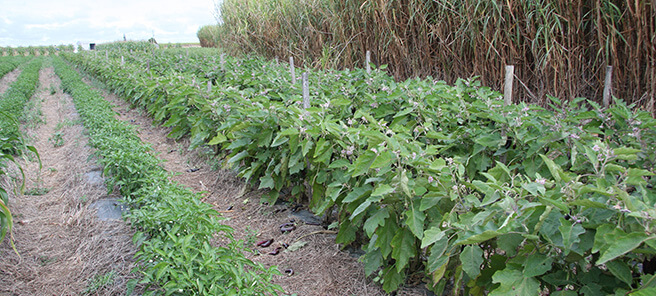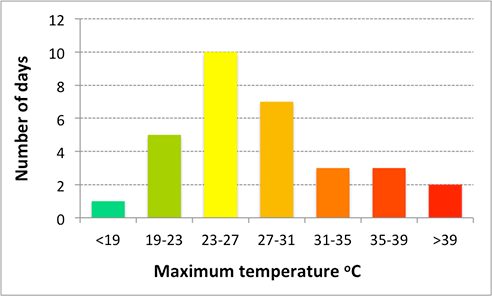The effects of climate change are predicted to vary considerably between regions. Some may benefit, while others will be disadvantaged.
For example, southern winter production areas such as Werribee, Cranbourne and East Gippsland will benefit from higher average winter temperatures (0.5–1.2°C). However, these areas are also used for summer production of leafy vegetables. Higher average summer maximum temperatures (0.6–1.3°C) will make them more marginal for some crops.
The northern cool season production areas such as Stanthorpe and the Atherton tableland will become more marginal for some winter crops, but may become better suited to others.
Central and northern regions used for winter and transition period production of cool season crops will become more marginal at the boundaries of the seasons (early and late). Examples of these areas are the Lockyer Valley in spring/ autumn for leafy vegetables and brassicas, central highlands and mid western areas of NSW.
Warm season crops in summer production areas will be less affected. There will be some effects on crops such as tomatoes and capsicums where pollination is adversely affected by average temperatures above 27°C, and there will be a marginal reduction in the length of production seasons.
The seasonality of frosts has already changed over the last 20 years, and frost will be more likely to occur in the future.
We have considered specific changes for six significant vegetable growing regions: Manjimup, Gatton, Hay, Werribee, Murray Bridge and Devonport.
Changes for each region are presented as means (averages) by month or year. Highs and lows for the period are hidden within the mean, but for vegetable farmers these can be disastrous. A run of very hot weather can damage and downgrade a crop, while an early or late frost can cause complete crop loss. Both events impact the production bottom line.
Case study – Manjimup
For example, the average monthly temperature in Manjimup in December is 25.3°C. This is predicted to rise by 0.8°C to 26.1°C by 2035. This doesn’t sound too bad. BUT, what this means is, that the number of hot Decembers (28°C average) will double from 1 in 10 years to 1 in 5 years.
Manjimup actually got a (1 in 10 years) hot December in 2012. The average maximum temperature for the month was 27.8°C. While this doesn’t sound too bad, it included 5 days above 35°C and 2 days above 39°C.
The crops grown in Manjimup during December include lettuce, baby leaf crops, brassicas and potatoes. Temperatures in the 35°C+ range are disastrous for these vegetables and will result in crop failures. In our study, similar scenarios are predicted to increase in frequency in Gatton, Hay, Werribee and Murray Bridge. The only region studied that is not likely to experience increased temperature spikes was Devonport

